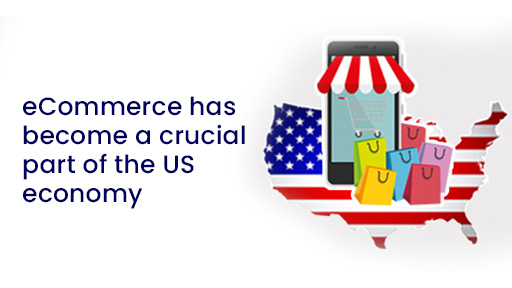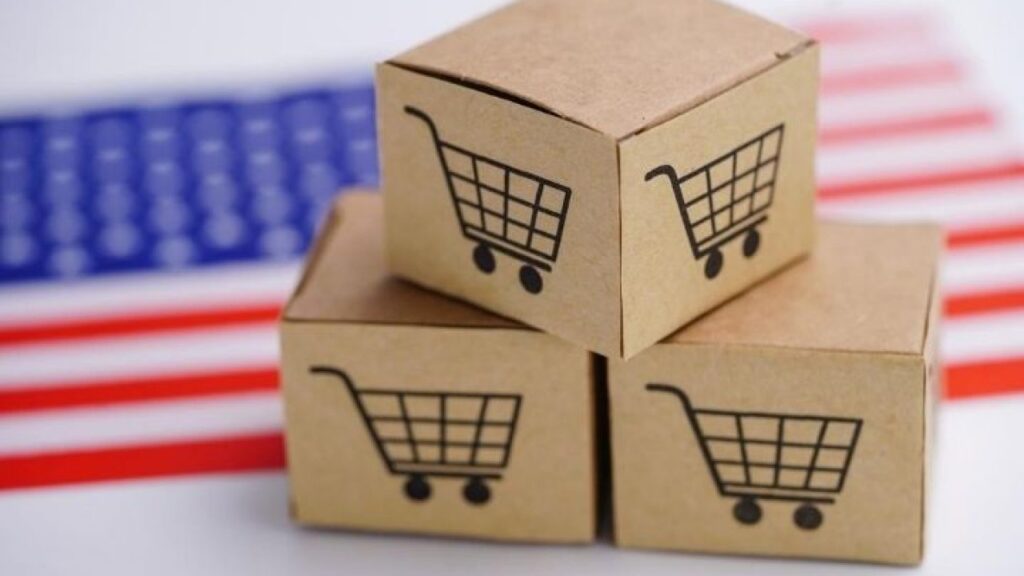The Vital Role of E-commerce in the U.S. Economy

In the age of e-commerce, the exchange of goods and services over the internet has initiated a sweeping transformation in the way Americans engage in both shopping and business endeavors. Its pervasive influence has propelled it to the forefront of the U.S. economy, catalyzing a complete metamorphosis of the retail sector. Within the confines of this blog article, we’ll embark on a journey to understand how e-commerce has fundamentally reshaped the fabric of modern commerce in the United States.

According to the US Department of Commerce, eCommerce sales in the US reached $791.7 billion in 2020, up 32.4% from the previous year. ECommerce sales now account for over 14% of total retail sales in the US.
E-commerce has surged ahead, driven by a confluence of factors that have reshaped the retail landscape in the United States. The proliferation of high-speed internet access, the ubiquitous presence of mobile devices, and the convenience and accessibility of online shopping have been key drivers of this transformation. The COVID-19 pandemic further turbocharged this trend as consumers shifted their buying habits towards online channels.
In response to this seismic shift, traditional brick-and-mortar retailers have made substantial investments in enhancing their e-commerce capabilities. Simultaneously, a new breed of online-only retailers has emerged to meet the surging demand. Notable e-commerce giants like Amazon, Walmart, eBay, and Target have solidified their positions as some of the most popular e-commerce destinations in the U.S.
E-commerce has not only emerged but firmly established itself as a dominant force in the American retail landscape. The pandemic accelerated its growth, prompting businesses to adapt swiftly to meet the heightened demand for online shopping. According to the U.S. Department of Commerce, e-commerce sales in the U.S. skyrocketed by 32.4% in 2020, in stark contrast to a mere 3.4% increase in total retail sales. As of now, e-commerce sales account for over 14% of total retail sales in the country, and this percentage is poised for further expansion in the years to come.
The growth of e-commerce can be attributed to a host of factors, including the widespread availability of high-speed internet access, the pervasive use of mobile devices, and the sheer ease and accessibility of online shopping. Consequently, many traditional brick-and-mortar retailers are channeling significant resources into bolstering their e-commerce capabilities, while a wave of digitally native online retailers has emerged to cater to the escalating demand.
In summary, e-commerce has firmly entrenched itself as a dominant force within the U.S. retail sector, and its trajectory indicates continued growth and evolution in the foreseeable future. The digital landscape teems with a myriad of online retailers catering to diverse markets and niches. Nevertheless, here are some of the prominent and widely recognized e-commerce platforms in the United States:
Amazon.com, Walmart.com, eBay.com, Target.com, Bestbuy.com, Apple.com, HomeDepot.com, Wayfair.com, Costco.com, Macy’s.com, Kohls.com, Zappos.com, Etsy.com, Nordstrom.com, Sephora.com, Lowe’s.com, Chewy.com, Ulta.com, Staples.com, Gap.com, Overstock.com, JCPenney.com, Gamestop.com, Barnesandnoble.com, OfficeDepot.com, Michaels.com, Oldnavy.com, Newegg.com, Bedbathandbeyond.com, Menards.com, Thehomedepot.com, Petco.com, 1800flowers.com, Williams-Sonoma.com, The Container Store, Crateandbarrel.com, Anthropologie.com, American Eagle Outfitters, REI.com, Levi.com, Coach.com, Footlocker.com, Dickssportinggoods.com, Banana Republic, Modcloth.com, Pier1.com, Moosejaw.com, Vans.com, Fossil.com, Dsw.com, PetSmart.com, Adidas.com, Lululemon.com, Timberland.com, Westelm.com, BlueNile.com, RalphLauren.com, Patagonia.com, H&M.com, Katespade.com, Build.com, Forever21.com, Ralphs.com, Lushusa.com, Abercrombie.com, Urbanoutfitters.com, Freepeople.com, Brooksbrothers.com, Michaels.com, REIoutlet.com, Dillards.com, Bloomingdales.com, Saksfifthavenue.com, Neimanmarcus.com, Lids.com, YankeeCandle.com, Buildabear.com, Anntaylor.com, Express.com, Coachoutlet.com, Sperry.com, Gymboree.com, Roxy.com, Sunglasshut.com, The-north-face.com, Quiksilver.com, Victoria’s Secret, Dickies.com, Frys.com, Boscovs.com, Zales.com, Cabelas.com, Cratejoy.com, Thredup.com, Zulily.com, Carhartt.com, Landsend.com, Surlatable.com, Moosejaw.com, Revolve.com
Presenting the Top 20 E-commerce Website Development Companies Registered in the USA, in No Particular Order:
- Xiteb
- Shopify
- WooCommerce (WordPress)
- Magento
- BigCommerce
- Volusion
- 3dcart
- Squarespace
- PrestaShop
- Salesforce Commerce Cloud
- OpenCart
- Wix
- Weebly
- Ecwid
- Zen Cart
- osCommerce
- Big Cartel
- Square Online Store
- X-Cart
- Hikashop
These e-commerce platforms provide a diverse array of features and capabilities designed to assist businesses of varying sizes in selling products and services online. While Shopify currently holds the title as the most popular and widely adopted platform in the U.S., there exists a multitude of alternative options to consider, tailored to suit your unique business requirements and objectives.



0 Comments